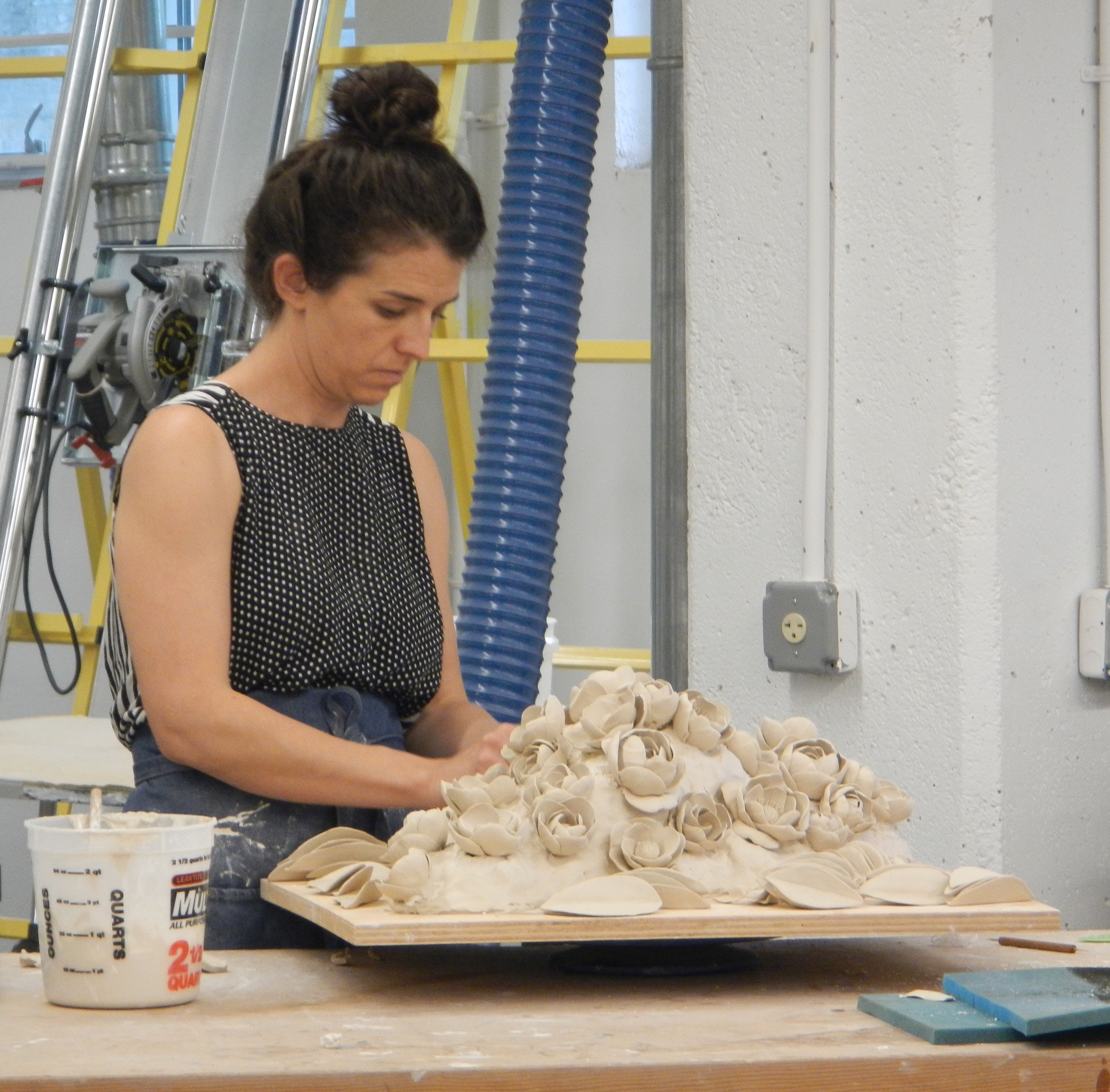Imagine your day as a studio potter. You, the potter, are the time keeper. (The clock, if you will.) And you are also the employee, keeping the work current. You are the owner, the manager and make no mistake, you're the manual labor. You're the designer and the quality inspector. You're the cleaning crew that comes in, sometimes after hours. You are the bookkeeper, the sales clerk and the shipping clerk. You're the publicity agent and the shopkeeper.
So there you were, on a hypothetical Monday, in sweats and sock feet at 10:30 a.m. Why didn't you punch the (also hypothetical) clock earlier? Well, you had been at your studio photo booth setup in the laundry room till 10 PM Sunday, the night before, taking photos of the new pieces you just unloaded from the kiln. You were up again at 6 Monday morning measuring, weighing and writing descriptions and prices for the new pots, for your website.
Then you went to the gym, because being a potter is a beating on the body, and that body needs care to be strong. After the gym, groceries for the household because you are still chief cook and bottle washer there. Breakfast for you came late. It was already mid-morning on Monday, and you were not in the studio working yet. You were in those sweats and sock feet and had not changed to studio clothing. No- you needed to be at the computer, cropping the new batch of photos and adjusting the color to reflect reality. You added the photos and text to the website and the written data to a spreadsheet. By the time you were done, and wrote up a blog post and a Facebook post alerting people about the new pots, it was lunchtime and you had still not gotten into the studio.
You dragged your feet a little because it had been a long morning already and you were a bit tired from a morning of many different, necessary parts that, still, had not taken you to touch clay. You checked your email, and perked up to discover that someone made a purchase from your pottery website. You immediately packed up the order to ship, printed up a postage label, and put out the package before the mail carrier arrived. You had lunch, did dishes, made the beds, put in a laundry, and at last, you went downstairs to the studio. You had been thinking about covered jars on and off all weekend, and you had spent a lot of time considering where you might sell them.
In the studio, you needed to prepare the clay for the next couple of days of wheel work. You checked the chart you'd formulated over time, noted the amounts of clay you would need to weigh out for those jars and lids, and weighed the clay portions on the gram scale. You kneaded the individual pieces to rid them of air bubbles, and bagged it all up to keep it moist and ready for Tuesday morning. You didn't start at the wheel yet, since you hadn't cleaned up last week's glaze area mess. You wanted to clean all that up before you would be walking around the pottery studio during the course of the wheel work, raising nasty glaze dust.
You went back over the glaze area with sponge and mop. You wore a mask because the glaze spatters on table and floor dried to a powder that's bad for your lungs. You stowed the glaze buckets under the table and washed brushes and glaze stirrers you missed at the end of last week when you were kind of fried after glazing pots for 2 1/2 days. You noted which glaze bucket needed refilling and checked the recipe and the ingredient storage to make sure you had all the powders and colorants you would need when you'll come around to making glaze again in a week. You added the ingredients to a list for the next order from Ceramic Supply.
It was 5:30, and you hadn't made a single new clay vessel on the wheel. And you were ready to call it a day. You were tired, though getting paid for today's work would not come till you sell the pots you prepared the studio for, and which you will begin making tomorrow. You started to ponder sales again, as you do several times a day. You noticed the day was still light and knew it would be good to get outside and away from dust, computer, and business plans, so you called someone at 5:30 to say "Let's walk." She said, "I'm too tired. I worked today."
You went for a walk by yourself, going over the design for tomorrow's jars in your head as you went.



























































